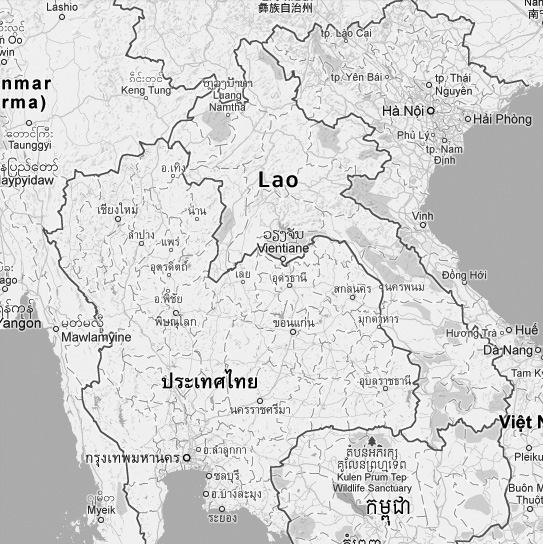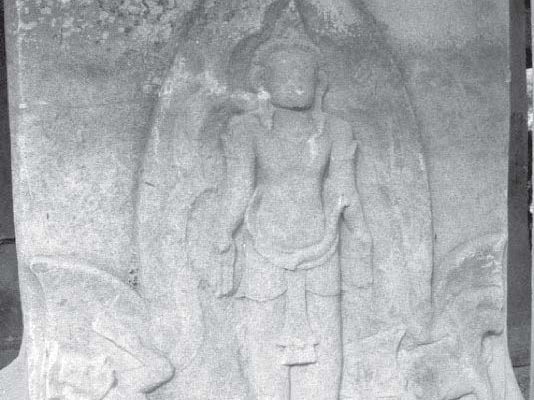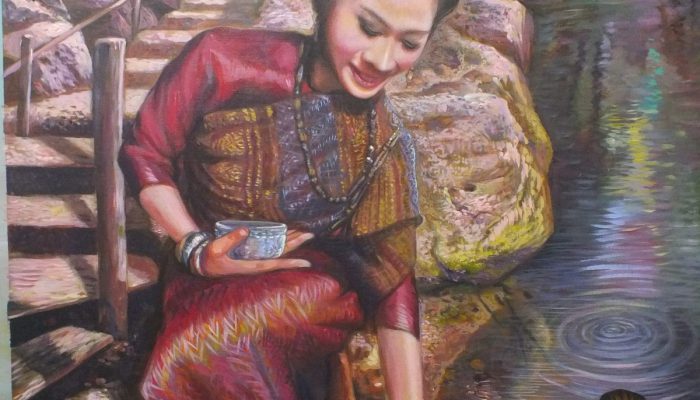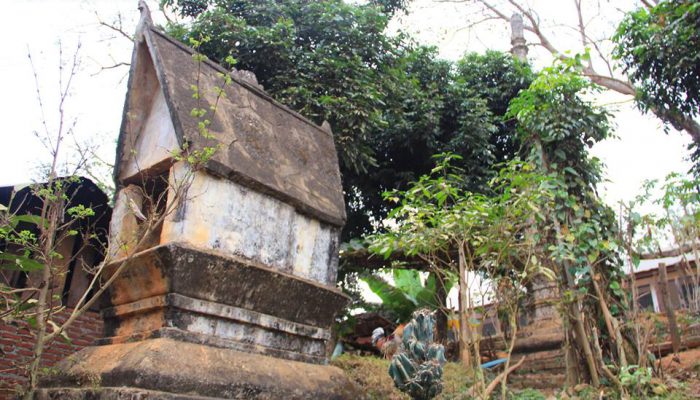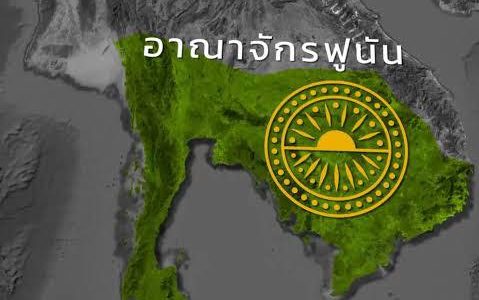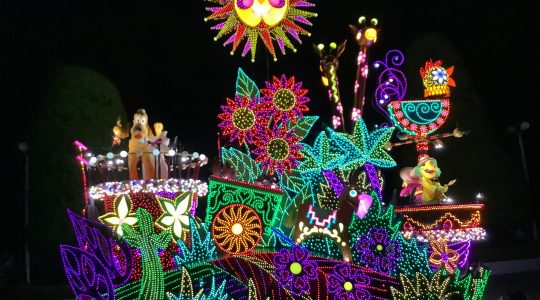Visions for Mo Lam in Mainland Southeast Asia : การก้าวข้ามพรมแดนทางวัฒนธรรมดนตรี
Transborder Theories and Paradigms in Ethnomusicological Studies of Folk Music: Visions for Mo Lam in Mainland Southeast Asia
Jarernchai Chonpairot
Ph.D. in Musicology-Ethnomusicology
Specialist. College of Music, Mahasarakham University, Thailand
Email. chonpairotj@gmail.com
In the old days music of Isan or Northeast Thailand was rarely known or appreciated by outsiders. It was considered an inferior music; the musicians and singers (molam) were looked down by people or musicians of other cultures. The Isan people themselves, especially educated people—college students and professors, also felt insecure in their arts.
Students felt ashamed when they had to attend Isan music class. Some of college students had protested when the college used 300 khaen ensemble to play for sport marching band. One student protested the university administrators to quit her studentship if the university invite her famous molam singer to give a lecture at the university. Students preferred to carry guitars instead of khaen.
These incidents reflected the barrier of social class stigma even in one’s own music culture. A similar case was/is happened in the national airline for not brave enough to present its traditional music to on board inflight audience.
Nowadays Northeastern Music of Thailand or commonly known as Isan music has gained popularity from local music to global music. Many musicians and scholars from the West came to Northeast Thailand to study khaen music. Also many of professional khaen player, phin players and molam singers have been invited to perform abroad privately and officially.
Northeast Thailand and Laos in the Old Days
Along the long history, at some certain period of time Isan region (Northeast Thailand) was part of Laos Lanxang Kingdom and some certain period of time Laos Lanxang was part of Siam (Thailand). Later on France took over Laos of the left Bank of the Mekhong River, as a colonial and part of Indochina. After French withdrawn from Indochina, Laos was under American control (1953-1975) and became the time of cold war and Vietnam war. During these periods mentioned, the people of the two banks of Mekhong River were able to make free crossing to visit relatives, to work, to live or to settle down as they wished.
Thailand and Laos have the Mekong River as a natural barrier or border.
Border Crossing Between Thailand and Laos
There were four main routes or four channels of migrations between Thai and Laos along the Mekhong River.
Route 1, between Vientiane and Nong Khai; Route 2, between Kammuan and Nakon Phanom; Route 3, between Savannakhet and Mukdahan; and Route 4, between Champasak and Ubon Ratchathani, as shown in the map below:

Maps of Isan and Laos
Because of natural barriers— high mountains, wide rivers, poor road system, and lack of proper transportation, each province of Laos was isolated from each other. The culture of each region, especially music and performing arts, have not much changed; but they are still charming and unique.
Between 1972- 1973, a Ph.D. candidate, Terry E. Miller, from Indiana University, came to Isan and Laos to do field works, collected materials for his dissertation, Kaen Playing and Lam Singing in Northeast Thailand. In this field works I was helping Terry as a guide, an interpreter, and a klon lam translator. It was good experiences on field-work techniques and English learning. Some scholars in Bangkok told him not to do research in Northeast Thailand on the reason that Isan was a poor region and no music was worth for doing research. However Terry E. Miller decided to do it.
In doing field works in Isan region at that time was very difficult, because of the poor infrastructure—no electricity and no paved roads. We interviewed famous molam singers and observed different genres of lam performances. In Laos, under the coalition government, left wing (Communist) and right wing (American support), field work in villages could not be conducted, because of strict regulation. The only things we could do were visiting radio stations and got some cassette tapes of lam singing they had made for broadcasting, mostly lam propagandas against communism.
After Prof Terry E. Miller finished his dissertation he still kept writing books and articles on Isan music culture; he has promoted Isan music and Lao music to the Western world and the whole world. Many musicians and scholars from many countries came to study Isan music, especially khaen music. Khaen had join Western symphony orchestra play khaen concerto in many world music events.
During 1975-1990, Laos PDR were closed to outsiders, that due to its national security reason. I could not get in Laos to do my field works, therefore I have to do field works in United States, Canada, and France instead. I was lucky enough to find famous Molam United States and France
Molam Buntong Insixiengmai was the most important figure among molam khon savan singers in United States.
Molam Bountong and his wife in Murfreesboro, Tennesse
On one New Year Festival, Lao people who lived in Paris invited him to perform a lam khon savan singing, with the excellent and famous female singer, Molam Phimmasone. It was a wonderful repartee and was also the last of their performance together. I used this lam khon savan audiotape for the analysis of my dissertation—Lam Khon Savan: A Vocal Genre of Southern Laos.
Another bright young male molam khon Savan singer, Molam Khamvong Insixiengmai; he was both poet and molam singer. He wrote a lam poetry, entitled, “I Miss My Home Land”; he himself sang this lam poetry and distributed among Lao communities in United States and Canada. All Lao people who had listen to his tape cried, because it was impressive, nostalgic and sad.
Molam Khamvong, a female molam, and Mokhaen Seung Theenanon Performance in New York City On theories and practices of Isan music and theatrical arts.
Isan music cultures consist of three music cultures, namely, molam culture, Kantruem culture, and phleng korat culture. Only molam culture will be discussed in this paper.
Instrumental Music of Molam Culture
The main instrument of molam culture are khaen mouth organ, phin plucked lute, ponglang wooden xylophone, and panpipe. These instruments have two idioms of playing—instrumental and lam. Most instrumental idioms were derived from khaen mouth organ solo. For lam idiom, a melodic pattern of lam poetry was its model or formal design. Among these instruments, khaen is the most important one.
Khaen Tuning System.
There are many sizes of khaen, based on its number of pipes: khaen hok—six pipes; khaen jet—14 pipes; khaen paet—sixteen pipe; and khaen kao—eighteen pipes. The most popular khaen is khaen paet or khaen of sixteen pipes. Here is a khaen paet tuning system.
Khaen tonal system
Tonal Range: from A to a2
(This pitches are not absolute pitches, they are shown for convenience as moveable pitches)
Khaen Improvisation
Although khaen music consists of 6 basic pieces, which can be grouped into two scale types: thang san and thang yao. The thang san scale comprises of lai sut sanaen, lai posai, and lai soi, whereas the thang yao scale comprises of lai yai, lai noi, and lai se. If one knows how to play lai yai, he can play lai noi and and lai se as well; if one knows how to play lai sut sanaen, he will be able to play lai posai and lai soi as well.
- Improvisation on lai yai mode.
Lai Yai mode consists of 5 tones:
Three main notes:

Short motives were built from the three main notes of each mode; each main note is a gravitating center. For example, starting from one of these notes within its mode: la, do, re, mi, sol, as shown on the chart below.
- Emphasizing E
The motivic variations can be started with any number of the surrounding tones and end with the central tone, creating a one or two beat variation patterns.
After making a motif with the E tone, then it may shift to A or C as you like. Therefore, the main notes are rotated among A, C, and E.
Here is an improvised version of the introduction of lai yai mode
Lai Yai Mode
(drones on mi and la)
Introduction
Theories and Practices on klon lam poetry and lam performances
Lam is a type of Isan (Northeast Thailand) performing arts. Lam may be used as a noun, meaning a type of performing arts, or as a verb, meaning to sing. Molam means a professional singer or an expert in lam singing. In addition a molam may mean a lam performance as well.
Types of Lam Performing Arts
Lam performing arts can be classified into 4 main types: lam phifa; lam phuen; lam klon, and lam mu. Lam Phifa is believed to be the oldest type of lam performing arts; this lam was not for entertainment, but for sickness healing. Phifa means sky spirit. When someone gets sick, his/her relative will go to ask an astrologist for the causes of the sickness. The astrologist will consult with his holy reference book.
In holding a phifa ceremony the phifa leader and her followers will prepare the offering objects—flowers and candle sticks. The leader prayed and invited the phifa spirits to come to the ceremony. After praying the phifa leader and her followers will sing and dance with khaen mouth organ accompaniment. The relatives of the sick person will ask the spirit about the causes of the sickness.
The phifa spirits which are possessing the phifa troupe leader, as well as some followers, will tell the cause of the sickness and how to cure the sickness. The relative of the sick person will accept the advice of phifa and fulfill the promises. It is amazing that in many case the sick persons recovered from the sickness and became healthy persons as before. Here are the pictures of phifa ceremony.
 The leader prays to and invite phifa spirits to come to the ceremony
The leader prays to and invite phifa spirits to come to the ceremony At the end of the ceremony everybody sings and dances
At the end of the ceremony everybody sings and dances At the end of the ceremony everybody sing and dance
At the end of the ceremony everybody sing and dance
The second type of molam performing arts is molam phuen, meaning a folk tale singer. There is only one male molam singer and one khaen mouth organ player. The tales were drawn from folk and Jataka stories (former birth stories of the Buddha).
Former famous molam phuen singer
Before the end of molam phuen era, another kind of molam emerged.
It was a molam klon with two molam singers—male and female (this will be discussed later).
Components Lam Klon Performing Art
A troupe of lam klon performing art consists of two molam singers, male and female, and a mo khaen, mouth organ player. A molam klon troupe plays on a small stage about 5 x 6 meter space, and about 2 meters high above the ground; molam singers and mo-khaen player stand, walk and dance on it. Usually a molam will have his/her own khaen player.
Male and female molam player compete each other with voice, wit, text repertoire, and arts of improvisation. They question each other on all kinds of subject, but the most difficult knowledge is on Buddhist doctrines. The one who did not have enough knowledge and could not sung with the right answer was the looser and had to leave the stage because of shame.
Lam Text and Melody
Texts are written in poetic form. One klon lam text consists of 3 sections: Introduction; Content; and Conclusion. A klon lam text can be of any length, depending on numbers of stanza of the content section. Although a lam performance lasts for a whole night, but the melody is repeated. There is only one tune deriving from one stanza of poetic text. The text is changing whereas the melody keeps repeating itself. One stanza of the poem consists of four lines, each line consists of four steady pulses or beats.
Lam Klon Performing Procedure
In lam singing there are many sessions: 1) Wai Khru, paying homage to teachers; 2) Honoring and Praising the Host; 3) Introducing themselves, showing off their talents and creditability; 4) Greeting each other; 5) Courting; 6) Question and Answer; 7) Folk tales or Jataka Stories and travelling through the forest; and 8) Farewell singings.
After molam klon, molam had developed into molam mu performing arts.
At first it consisted of only between ten to twenty performers, but nowadays a big troupe has more than one hundred members. There are two style s of lam mu singing—lam vieng and lam phloen.
Klon Lam Poetry
Klon lam is a poetry for lam singing; it is called in accordance with its type, style, or genre of lam singing. Lam singing styles include: lam thang san, lam thang yao, lam toei, lam doen, lam phuen, lam mu, lam phloen and lam xing. In this paper only lam thang san, lam thang yao, and lam toei were analyzed.
Lam thang san is a style of lam singing in rather fast or meddle tempo, with steady beat or pulse without any melisma, except at the introduction part. There are two types of lam than san poetic text—klon kap (or klon tat) and klon yoen. There are two types of klon lam thang san: one is called klon kap or klon tat, the other one is called klon nyoen. A klon lam thang san, either in klon tat or klon nyoen form, each consists of tthree parts—introduction, main body, and conclusion.
Klon Lam Thang San, Main Part, Kon Nyoen Form
A klon yoen poetry of the main body consists of a number of stanzas. Each stanza may have two or four stanzas. Each line contains seven to twelve syllables or four steady beats in terms of music. Each certain syllable positions within stanza have been designated different tone mark as shown below:
Formal Structure of Kon Nyoen Stanza
In brief, a lam thang san melody consists of three melodic sections: introduction, sung in recitative form; main melody, consisting of four beats in each phrase, and each stanza consists of four phrases or lines, sung in strophic form; the concluding section consists of three of two-beat phrase, sung in recitative style.
Klon Khuen (Introduction)
Main Body of Lam Poetry
Klon Nyoen Formal Design
First Line:

Second Line

Third Line:

Fourth Line:

In lam performing arts, the poetries are prewritten; molam singers have to memorize and store them in their memory stock. Then the appropriated poetries will be drawn out from their memory stock to use during their performance on stage. The melodic patterns of the main body of lam poetry are derived from a stanza of the poetry—pitches from word tones and duration of tones from short and long vowels.
All senior molam singers in Laos always improvise instantly on spot, since they were trained to improvise when they were lam students. During their training period, between 6-12 months, lam students had to sit alongside with their teachers for the whole performance to learn, to observe and to memorize every aspects of lam traditions, demonstrated to them by their teachers.
Trans-border
Trans-border may be applied not only to physical aspect as cultural border or country border, but it also include social class barrier as well. Transborder can be classified into following aspects:
1) Social Stigma with Molam and Mokhaen. Many Isan people, especially young people, had conflicts in their minds; they were not confident and felt ashame of their own culture—molam and mokhaen. If someone said something as uneducated person, he/she would be blamed as a molam behavior,
I used to invited Molam Chaweewan, the most famous molam, to give a lecture and demonstrate lam singing to students, they questioned that why did they have to listen to molam since they were already at the college level.
2) Trans-border among social class of music. In one occasion, the students protested the college administrators for having a khaen orchestra of 300 khaen players to perform for sport marching band. They reasoned that since the world had already modernized, they felt shameful for the college show the out of fashion music to the public.
3) Trans-border among music social class and social insecurity. One time the president of the university wanted to invite a famous molam to give lecture to students, the daughter of that molam rusted to the president and said to the president that if the university invite her father to come to the university she will resign from her student ship. She told the president that she was ashamed to let other people know that her father was a molam.
4) Another case, one of my university colleagues hired a baby sitter to take care of his daughter, he told the baby sitter that “don’t speak Lao to my daughter.” He afraid that people might know he was an Isan (Lao) person.
5) Another interesting case, Auto colonization. On a dinner party in the university, Thai music ensemble of khrueang sai thai and Western pop music ensemble were prepared to perform at a dinner party. According to the program schedule, the krueang sai Thai ensemble to be performed by 7 pm and the Western pop music at 11 pm.
The Western music band took over the stage since 5 pm., whereas Thai music had to play at the ground floor. Thai airway international are never brave enough to present Thai traditional music in flight. Recently Thai government just issued the regulation that anyone wants to teach in college or university level, Thai teacher is included, had to pass 550 of English TOFL score.
6) Trans-border on Language. Many people looked down on molam and mokhaen, people considered molam and mokhaen were low educated persons. One time I was holding a khaen at Don Mueang Airport with many people passed by; one person stopped by and asked me, where did I performed last night and how many baht did I get paid. Another person stopped in front of me and asked where did I come from, I told him that I came from Manila. He was surprised and asked me how can I went there, how do you know the language.
7) Looking Outward and Inward. The best way to study culture, one has to have the capability to look outward and inward, otherwise one cannot get insight of that culture. One may have prejudice on other music culture.
8) On Western music theories. Western music has its own theories and practices, some theories may not appropriated to be used for the analysis of other music culture.
9) Thai classical music theories and practices are proper to apply to analyze Thai music, but not appropriated for Thai folk music, especially Isan music.
To solve the social class trans-border in Isan society, one effective tool was through educational system. Mahasarakham University has established curriculum for many branches of music, including folk music. Therefore many students of folk music background could attend. There are numbers of molam and mokhaen who had graduated from Mahasarakham University with bachelor, master, and doctoral degree in music. One molam singer received her doctoral degree in ethnomusicology. The other effective tool to overcome the social barrier was through the government program on bestowing the prestigious position to the excellent artists in many fields as National Artists.
Conclusion
Each music culture has its own theories and practices; the elements, formal design of music, and the way of music had been created is also different. Isan instrumental music, khaen mouth organ, phin plucked lute, wot panpipe, and ponglang xylophone, is totally improvised in nature. Melody is created from mini motives of each important notes—tonic, dominant and its passing notes. Then these mini motives are combined together to be short motives, phrases, and melodies.
Concerning of analysis of the music of any culture, the researcher should keep in mind that the application of a certain theory from other music culture may be wrong or inappropriate to measure music of other culture. Central Thai music theory cannot apply to Isan music in terms of tuning system as well as a compositional formal designs.
In term of trans-border, since there are many types of barriers: outsider-insider, in between, social class and trans-border, social stigma, education and trans-border, and self-construct cultural border that we are trying to overcome.
Here is an open question on the matter—How can we overcome the social border that prevent us, define us, and liberate us from social stigma, social insecurity, auto- colonization, and all imagined border?
Thank you.
**********
Click edit button to change this text. Lorem ipsum dolor sit amet, consectetur adipiscing elit. Ut elit tellus, luctus nec ullamcorper mattis, pulvinar dapibus leo.
การก้าวข้ามพรมแดนทางวัฒนธรรมดนตรี
1
เมื่อก่อน ดนตรีอีสาน หรือภาคตะวันออกเฉียงเหนือของไทย ไม่ค่อยเป็นที่รู้จักของคนภายนอก ถือว่าเป็นดนตรีชั้นต่ำ นักดนตรีและนักร้องหมอลำถูกเหยียดหยามจากคนไทยภาคอื่น, นักดนตรีประเภทอื่น ๆ หรือแม้แต่คนอีสานเอง โดยเฉพาะพวกที่มีการศึกษา
- นักศึกษาและอาจารย์มหาวิทยาลัยก็รู้สึกไม่มั่นใจในศิลปะของตนเอง นักศึกษาจะรู้สึกอับอาย เมื่อต้องเข้าเรียนวิชาดนตรีอีสาน
- นักศึกษาบางส่วนเคยคัดค้านเมื่อมหาวิทยาลัยใช้วงแคน 300 เต้า ในการบรรเลงดนตรีของวงโยธวาทิตกีฬา นักศึกษาคนหนึ่งประท้วงผู้บริหารมหาวิทยาลัยโดยขู่ว่าจะลาออกจากการเป็นนักศึกษา หากมหาวิทยาลัยเชิญบิดาของเธอ ซึ่งเป็น (นักร้อง) หมอลำมีชื่อเสียง มาบรรยายที่มหาวิทยาลัย
2
นักศึกษานิยมถือกีต้าร์มากกว่า แคน
เหตุการณ์เหล่านี้สะท้อนถึงกำแพงชนชั้นทางสังคม แม้ภายในวัฒนธรรมดนตรีของตนเอง กรณีทำนองเดียวกันก็กำลังเกิดขึ้นในสายการบินแห่งชาติของเรา ที่ไม่กล้าหาญพอจะเสนอดนตรีประจำชาติหลากหลายรูปแบบแก่ผู้ฟังบนเครื่องบิน
- ทุกวันนี้ ดนตรีภาคตะวันออกเฉียงเหนือของประเทศไทย หรือที่เรียกว่า ดนตรีอีสาน ได้รับความนิยมมากขึ้นตั้งแต่ระดับท้องถิ่นไปจนถึงระดับโลก
- นักดนตรีและนักวิชาการจำนวนมากจากโลกตะวันตกได้เดินทางมายังภาคตะวันออกเฉียงเหนือของไทยเพื่อมาศึกษาดนตรีแคน
- หมอแคนมืออาชีพ รวมทั้งหมอพิณและนักร้องหมอลำหลายคนได้รับเชิญไปแสดงในต่างประเทศ ทั้งโดยส่วนบุคคลและอย่างเป็นทางการ
3
ตลอดประวัติศาสตร์อันยาวนาน ในบางช่วงเวลาภาคอีสาน (ตะวันออกเฉียงเหนือของประเทศไทย) เคยเป็นส่วนหนึ่งของอาณาจักรลาว – ล้านช้าง และในบางช่วงเวลาลาว-ล้านช้างก็เคยเป็นส่วนหนึ่งของสยาม (ประเทศไทย) ต่อมาฝรั่งเศสเข้ายึดครองลาวฝั่งซ้ายของแม่น้ำโขงเป็นอาณานิคมและเป็นส่วนหนึ่งของอินโดจีนหลังจากฝรั่งเศสถอนออกจากคาบสมุทรอินโดจีน ลาวอยู่ภายใต้การควบคุมของอเมริกา (พ.ศ.2496-2518) ในช่วงสงครามเย็นและสงครามเวียดนาม
- ระหว่างช่วงระยะเวลาดังกล่าว ผู้คนบนสองฝั่งแม่น้ำโขงสามารถข้ามไปมาได้อย่างเสรีเพื่อไปเยี่ยมญาติ ไปทำงาน ไปอยู่อาศัยหรือลงหลักปักฐานได้ตามต้องการ
- ประเทศไทย และประเทศลาว มีแม่น้ำโขงเป็นแนวกั้นหรือเป็นเส้นเขตแดนธรรมชาติ
4
มีเส้นทางหรือช่องทางหลักสี่จุดสำหรับการอพยพเคลื่อนย้ายระหว่างไทยกับลาวตามแนวแม่น้ำโขง
เส้นทางที่ 1 ระหว่างเวียงจันทน์ กับหนองคาย
เส้นทางที่ 2 ระหว่างคำม่วน กับนครพนม
เส้นทางที่ 3 ระหว่างสะหวันนะเขต กับมุกดาหาร
และเส้นทางที่ 4 ระหว่างจำปาสัก กับอุบลราชธานี
ดังแสดงในแผนที่
เนื่องจากธรรมชาติขวางกั้น ได้แก่ เทือกเขาสูง แม่น้ำกว้างใหญ่ ถนนหนทางยากลำบากและขาดระบบคมนาคมขนส่งที่เหมาะสม แต่ละจังหวัดของลาวจึงโดดเดี่ยวตัดขาดจากกันวัฒนธรรมของแต่ละภูมิภาค โดยเฉพาะดนตรีและศิลปะการแสดง จึงไม่ได้เปลี่ยนแปลงมากนัก แต่ว่ายังคงมีเสน่ห์และมีเอกลักษณ์
ระหว่างปี 2515 – 2516 เทอรี่ อี. มิลเลอร์ นักศึกษาปริญญาเอกจากมหาวิทยาลัยอินเดียนา มาที่อีสานและลาวเพื่อวิจัยภาคสนามรวบรวมข้อมูลสำหรับวิทยานิพนธ์ของเขา การเล่นแคนและร้องลำในภาคตะวันออกเฉียงเหนือของประเทศไทย
5
ในงานภาคสนามนี้ ผมได้ช่วยเทอรี่ในฐานะมัคคุเทศก์ ล่าม และผู้เแปลกลอนลำซึ่งเป็นประสบการณ์ที่ดีสำหรับเทคนิคการทำงานภาคสนามและการฝึกภาษาอังกฤษ นักวิชาการในกรุงเทพฯ บางคนบอกเทอรี่ว่าอย่ามาทำวิจัยที่อีสานเลย ด้วยเหตุผลว่าอีสานเป็นดินแดนยากไร้ ไม่มีดนตรีที่มีค่าพอจะทำวิจัย
อย่างไรก็ตาม เทอรี่ อี. มิลเลอร์ ตัดสินใจทำการทำงานภาคสนามในภาคอีสาน ในตอนนั้นมีความยากลำบาก เพราะขาดแคลนโครงสร้างพื้นฐาน — ไม่มีไฟฟ้า ไม่มีถนนลาดยาง เราได้สัมภาษณ์นักร้องหมอลำที่มีชื่อเสียงหลายคนและสังเกตว่ามีการแสดงหมอลำแบบต่าง ๆ ในประเทศลาวภายใต้รัฐบาลผสม ฝ่ายซ้าย (คอมมิวนิสต์) และฝ่ายขวา (อเมริกาสนับสนุน) ไม่สามารถทำงานภาคสนามในหมู่บ้านได้ เพราะมีกฎระเบียบเข้มงวด เราทำได้เพียงไปตามสถานีวิทยุและรับเทปคาสเซ็ทเพลงร้องลำที่เขาทำไว้สำหรับออกอากาศ ส่วนใหญ่เป็นลำโฆษณาต่อต้านคอมมิวนิสต์
6
หลังจากอาจารย์เทอรี่ อี.มิลเลอร์ ทำวิทยานิพนธ์เสร็จ ท่านก็ยังเขียนหนังสือและบทความเกี่ยวกับวัฒนธรรมดนตรีอีสาน และได้ส่งเสริมดนตรีอีสาน และดนตรีลาวให้เป็นที่รู้จักของชาวตะวันตกและคนทั่วโลก นักดนตรีและนักวิชาการมากมายจากหลายประเทศได้มาเรียนรู้ดนตรีอีสาน โดยเฉพาะอย่างยิ่ง ดนตรีแคนแคนได้ร่วมบรรเลงในวงซิมโฟนีออร์เคสตร้า เล่นแคนคอนแชร์โตในมหกรรมดนตรีระดับโลกหลายครั้ง
ระหว่างปี 2518 – 2533 สาธารณรัฐประชาธิปไตยประชาชนลาวปิดประเทศ ด้วยเหตุผลความมั่นคงของชาติ ผมไม่สามารถไปทำงานวิจัยภาคสนามได้ จึงไปทำงานภาคสนามในสหรัฐอเมริกา แคนาดา และฝรั่งเศส แทน โชคดีที่ได้พบนักดนตรีหมอลำที่มีชื่อเสียงหลายคนในสหรัฐอเมริกา และฝรั่งเศส
7
หมอลำบุนตอง อินสีเซียงใหม่ (Buntong Insixiengmai) คือบุคคลสำคัญที่สุดในแวดวงนักร้องหมอลำคอนสะหวัน ในสหรัฐฯ
ในงานฉลองวันปีใหม่คราวหนึ่ง คนลาวที่อยู่ในฝรั่งเศสได้เชิญท่านไปแสดงลำคอนสะหวันกับหมอลำหญิงชั้นครูผู้มีชื่อเสียง คือหมอลำพิมมะสอน (Phimmasone)
นับเป็นการตอบโจทย์ที่ยอดเยี่ยม และเป็นการแสดงร่วมกันครั้งสุดท้ายของท่านทั้งสองผมได้ใช้เทปบันทึกเสียง ลำคอนสะหวัน ครั้งนี้
สำหรับการวิเคราะห์ในวิทยานิพนธ์ของผม — :
Lam Khon Savan: A Vocal Genre of Southern Laos
หนุ่มหมอลำคอนสะหวัน ที่มีความสามารถด้านการลำ อีกคนหนึ่งคือ หมอลำคำวง อินสีเซียงใหม่ (Khamvong Insixiengmai) เขาเป็นทั้งกวีและนักร้องหมอลำ เขาเขียนบทกวี ชื่อว่า “I Miss My Homeland” และขับลำบทนี้เองและได้แจกจ่ายในชุมชนคนลาวในสหรัฐฯ และแคนาดา คนลาวทุกคนที่ได้ฟังเทปของเขา ต่างร้องไห้ เพราะมันกินใจ ชวนให้คิดถึงบ้าน และเศร้า
8
ในเชิงทฤษฎีและปฏิบัติ ดนตรีและการแสดงของอีสานประกอบด้วยวัฒนธรรมดนตรีสามส่วน คือ หมอลำ กันตรึม และเพลงโคราชในการนำเสนอครั้งนี้ จะพูดถึงเฉพาะวัฒนธรรมหมอลำ
เครื่องดนตรีหลักของวัฒนธรรมหมอลำ คือ แคน เครื่องเป่า, พิณ เครื่องดีด, โปงลางระนาดไม้ และโหวด
เครื่องดนตรีเหล่านี้มีรูปแบบการเล่นสองสำนวน — สำนวนทางเครื่อง และสำนวน ลำ สำนวนทางเครื่องบรรเลงส่วนมากมาจากการเดี่ยวแคน ส่วนสำนวนลำ จะมีต้นแบบคือทำนองกลอนลำ ในบรรดาเครื่องดนตรีเหล่านี้แคน สำคัญที่สุด
9
แคน มีหลายขนาด แล้วแต่จำนวนเลาที่นิยมมากที่สุดคือ แคนแปด หรือแคนสิบหกลูก
นี่คือระบบเทียบเสียงแคนแปด (สาธิตดนตรี)
นี่คือท่อนนำของ ลายใหญ่ แบบด้นสด (สาธิตดนตรี)
ลำ เป็นศิลปะการแสดงแบบหนึ่งของอีสาน ลำ อาจใช้เป็นคำนาม หมายถึงศิลปะการแสดงแบบหนึ่ง หรือเป็นคำกริยา หมายถึง ขับร้อง หมอลำ หมายถึง นักร้อง หรือผู้เชี่ยวชาญในการร้อง ลำ นอกจากนี้ หมอลำ อาจหมายถึงการแสดง ลำ ด้วยเช่นกัน
10
ศิลปะการแสดงหมอลำ แบ่งได้เป็น 4 แบบ คือ ลำผีฟ้า ลำพื้น ลำกลอน และลำหมู่
ลำผีฟ้า เชื่อว่าเป็นศิลปะการลำ ที่เก่าแก่ที่สุด จุดประสงค์ไม่ใช่เพื่อความบันเทิง แต่เพื่อการรักษาเยียวยา
แบบที่สองคือ หมอลำพื้น หมายถึง นักร้องเพลงพื้นบ้าน ประกอบด้วยผู้ร้องหมอลำชายหนึ่งคน และผู้เล่นแคนหนึ่งคน เรื่องราวที่ใช้แสดง มาจากนิทานพื้นบ้าน หรือชาดก (เรื่องประวัติพระพุทธเจ้าในชาติก่อน ๆ )
11
หมอลำกลอน คณะหมอลำกลอน จะประกอบด้วย หมอลำสองคน ชายหนึ่ง หญิงหนึ่งและหมอแคนหนึ่งคน คณะหมอลำกลอนจะแสดงในเวทีเล็ก ๆ กว้างยาวประมาณ 5 x 6 เมตร สูงประมาณ 2 เมตรจากพื้นดิน โดยหมอลำ และหมอแคน จะยืน เดิน และร่ายรำ บนเวทีนั้น
ต่อจากหมอลำกลอน การแสดงหมอลำได้พัฒนาเป็น หมอลำหมู่ แรกเริ่มก็มีผู้แสดงประมาณสิบถึงยี่สิบคน แต่ทุกวันนี้คณะหมอลำใหญ่ ๆ บางคณะมีสมาชิกกว่าร้อยคน
12
การข้ามพรมแดนไม่เพียงใช้ได้ในเชิงกายภาพ เช่นข้ามวัฒนธรรม หรือข้ามประเทศเท่านั้น แต่ยังรวมถึงการข้ามกำแพงชนชั้นทางสังคมด้วย การข้ามพรมแดนทางสังคมอาจแบ่งเป็นลักษณะต่าง ๆ ดังนี้
1) ตราบาปของหมอลำและหมอแคน คนอีสานหลายคน โดยเฉพาะคนหนุ่มสาว มีความขัดแย้งในใจ ไม่มั่นใจและอับอายในวัฒนธรรมของตัวเอง เช่นหมอลำ และหมอแคน ถ้าใครพูดจาแบบคนไร้การศึกษา จะถูกตำหนิว่าประพฤติตัวเหมือนหมอลำ
ผมเคยเชิญหมอลำฉวีวรรณ ดำเนิน มาบรรยาย และสาธิตการร้องลำแก่นักศึกษา พวกเขาถามว่าทำไมต้องมาฟังหมอลำ ในเมื่อตอนนี้อยู่ระดับมหาวิทยาลัยแล้ว
13
2) ข้ามพรมแดนทางสังคมในดนตรี ครั้งหนึ่งนักศึกษาประท้วงผู้บริหารมหาวิทยาลัยที่นำวงแคนวงที่มีผู้เล่นแคน 300 คน มาแสดงในวงโยธวาทิตของกิจกรรมกีฬา โดยให้เหตุผลว่าโลกเข้าสู่ยุคสมัยใหม่แล้ว พวกเขารู้สึกอับอายแทนมหาวิทยาลัยที่นำดนตรีล้าสมัยมาอวดผู้คน
3) การข้ามพรมแดนชนชั้นทางสังคมในดนตรี และความไม่มั่นใจทางสังคม คราวหนึ่งอธิการบดีมหาวิทยาลัยต้องการเชิญหมอลำที่มีชื่อเสียงผู้หนึ่งมาบรรยาย ลูกสาวของหมอลำผู้นั้นรีบเข้าพบอธิการบดีเพื่อบอกว่า ถ้ามหาวิทยาลัยเชิญพ่อของเธอมาบรรยายที่มหาวิทยาลัย เธอจะลาออกจากมหาวิทยาลัยเธอบอกอธิการบดีว่า เธออับอายที่จะให้เพื่อน ๆ รู้ว่าพ่อเธอเป็นนักร้องหมอลำ
14
4) อีกกรณีหนึ่ง เพื่อนอาจารย์มหาวิทยาลัยของผมคนหนึ่ง จ้างพี่เลี้ยงเด็กมาดูแลลูกสาวเขาบอกพี่เลี้ยงเด็กว่า “ห้ามพูดลาวกับลูกสาวฉัน” เขากลัวว่าคนอื่นจะรู้ว่าเขาเป็นคนอีสาน (ลาว)
5) อีกกรณีหนึ่งที่น่าสนใจ การยอมเป็นเมืองขึ้นทางวัฒนธรรมเอง ในงานเลี้ยงอาหารค่ำ ครั้งหนึ่งในมหาวิทยาลัย ได้จัดวงเครื่องสายไทยและวงดนตรีสากลตะวันตกมาแสดง ตามกำหนดการ วงเครื่องสายไทยจะบรรเลงเวลาหนึ่งทุ่ม วงดนตรีสากลแสดงเวลาห้าทุ่ม วงดนตรีตะวันตกยึดเวทีตั้งแต่ห้าโมงเย็น ขณะที่วงดนตรีไทยต้องเล่นอยู่ข้างล่าง และการบินไทยไม่เคย
กล้าพอที่จะเสนอดนตรีไทยแก่ผู้โดยสารบนเครื่องบิน
เมื่อไม่นานมานี้รัฐบาลไทยได้ออกกฎระเบียบว่า ผู้ที่ต้องการสอนในระดับมหาวิทยาลัย รวมถึงครูสอนภาษาไทยด้วย ต้องได้คะแนนสอบความสามารถทางภาษาอังกฤษ (TOEFL) เกิน550 คะแนน
6) การข้ามพรมแดนทางภาษา หลายคนดูถูกหมอลำและหมอแคนว่าเป็นคนด้อยการศึกษา คราวหนึ่งผมถือแคนอยู่ที่สนามบินดอนเมือง มีคนเดินผ่านไปมามากมาย คนหนึ่งหยุดถามผมว่า เมื่อคืนไปเล่นที่ไหน ได้ค่าแรงกี่บาท อีกคนหยุดตรงหน้าผม ถามว่ามาจากไหนผมตอบว่ามาจากกรุงมะนิลา เขาแปลกใจและถามว่า ไปได้ยังไง รู้ภาษาได้ยังไง
15
7) มองออกนอก มองเข้าใน วิธีดีที่สุดในการศึกษาวัฒนธรรมหนึ่ง คือต้องมีความสามารถในการมองออกข้างนอก และมองเข้าข้างในมิฉะนั้นแล้วเราจะไม่สามารถเข้าถึงวัฒนธรรมนั้น ๆ เราอาจมีอคติต่อวัฒนธรรมดนตรีอื่น ๆ
8) ทฤษฎีทางดนตรีของตะวันตกย่อมมีทฤษฎีและการปฏิบัติของตนเอง บางทฤษฎีอาจไม่เหมาะจะนำมาใช้ในการวิเคราะห์วัฒนธรรมดนตรีแบบอื่น
9) ทฤษฎีและปฏิบัติของดนตรีไทยย่อมเหมาะสมที่จะใช้วิเคราะห์แบบดนตรีไทย แต่ไม่เหมาะจะใช้กับดนตรีพื้นบ้านไทย โดยเฉพาะดนตรีอีสาน
16
เพื่อแก้ปัญหาการข้ามพรมแดนของชนชั้นทางสังคมในสังคมอีสาน เครื่องมือหนึ่งที่ได้ผล คือผ่านระบบการศึกษา มหาวิทยาลัยมหาสารคามได้จัดวางหลักสูตรสำหรับดนตรีหลายสาขา รวมทั้งดนตรีพื้นบ้าน ดังนั้น นักศึกษาจำนวนมากที่มีพื้นฐานทางดนตรีพื้นบ้าน สามารถเข้าเรียนได้มีหมอลำ และหมอแคนจำนวนหนึ่งจบการศึกษาจากมหาวิทยาลัยมหาสารคามในระดับปริญญาตรีปริญญาโท และปริญญาเอกในสาขาดนตรี และมีหมอลำหญิงคนหนึ่งได้รับปริญญาเอกในสาขา Ethnomusicology
เครื่องมือที่มีประสิทธิผลอีกอย่างหนึ่งสำหรับก้าวข้ามอุปสรรคทางสังคม คือโครงการของรัฐในการมอบตำแหน่งอันทรงเกียรติแก่ศิลปินยอดเยี่ยมในหลาย ๆ สาขา ให้เป็นศิลปินแห่งชาติ
17
วัฒนธรรมดนตรีแต่ละวัฒนธรรม มีทฤษฎีและปฏิบัติของตนเอง องค์ประกอบ แบบแผนทางดนตรี และวิธีการสรรค์สร้างดนตรี ย่อมต่างกัน โดยธรรมชาติแล้ว เครื่องดนตรีอีสานไม่ว่าจะเป็นแคน พิณ โหวด หรือโปงลาง ล้วนเป็นดนตรีประเภทบรรเลงด้น ทั้งสิ้น โดยการนำเสียงสำคัญ คือเสียงที่หนึ่ง เสียงที่สาม และเสียงที่ห้าจากระบบเสียงที่มีอยู่ โดยนำแต่ละเสียงมา
ประดิษฐ์ขึ้นเป็นวลีย่อย ๆ จำนวนสามเส้า แต่ละเส้าต่างก็พัฒนาเป็นประโยค แล้วนำทั้งสามเส้ามาเชื่อมโยงกันเข้าเป็นบทเพลง
โดยทางปฏิบัติแล้ว นิยมก่อตัวที่เสียงที่ห้าก่อน เมื่อสร้างประโยคได้พอสมควรแล้วเปลี่ยนไปก่อตัวที่เสียงที่หนึ่ง แล้วไปเสียงที่สาม แต่ทั้งนี้ไม่มีการกำหนดตายตัว แต่ขึ้นกับการตัดสินใจของผู้เป่าเป็นสำคัญ
18
เกี่ยวกับกำรวิเคราะห์วัฒนธรรมดนตรีใดใดก็ตาม ผู้วิจัยต้องตระหนักไว้เสมอว่า การประยุกต์ใช้ทฤษฎีบางทฤษฎีจากวัฒนธรรม ดนตรีอื่นอาจเกิดความผิดพลาด และไม่เหมาะสมที่จะใช้วัดดนตรีของอีกวัฒนธรรมหนึ่ง
ทฤษฎีดนตรีไทยภาคกลางไม่สามารถประยุกต์ใช้ได้กับดนตรีอีสาน ในแง่ของระบบเสียง และโครงสร้างหรือรูปแบบของบทเพลง
โดยสรุป ในแง่ของการก้าวข้ามพรมแดนทางวัฒนธรรมนั้น มีอุปสรรคหลายด้าน กล่าวคือการเป็นคนนอก – คนใน ระหว่างกลาง, การข้ามพรมแดนชนชั้นทางสังคม, ตราบาปหรือรอยมลทินทางสังคม, การข้ามพรมแดนการศึกษาและพรมแดนทางวัฒนธรรมที่ก่อให้กับตัวเอง ซึ่งเราพยายามจะก้าวพ้นให้ได้
ตรงนี้เป็นคำถามสำหรับทุกท่านเกี่ยวกับปัญหานี้ — เราจะก้าวข้ามพรมแดนทางสังคมที่กีดกันเรา และสร้างนิยามให้ตัวเราเอง ได้อย่างไร จะปลดปล่อยตัวเราจากรอยมลทินทางสังคม ความไม่มั่นคง การยอมเป็นทาสทางอาณานิคม และพรมแดนในจินตนาการเหล่านี้ได้อย่างไร


























